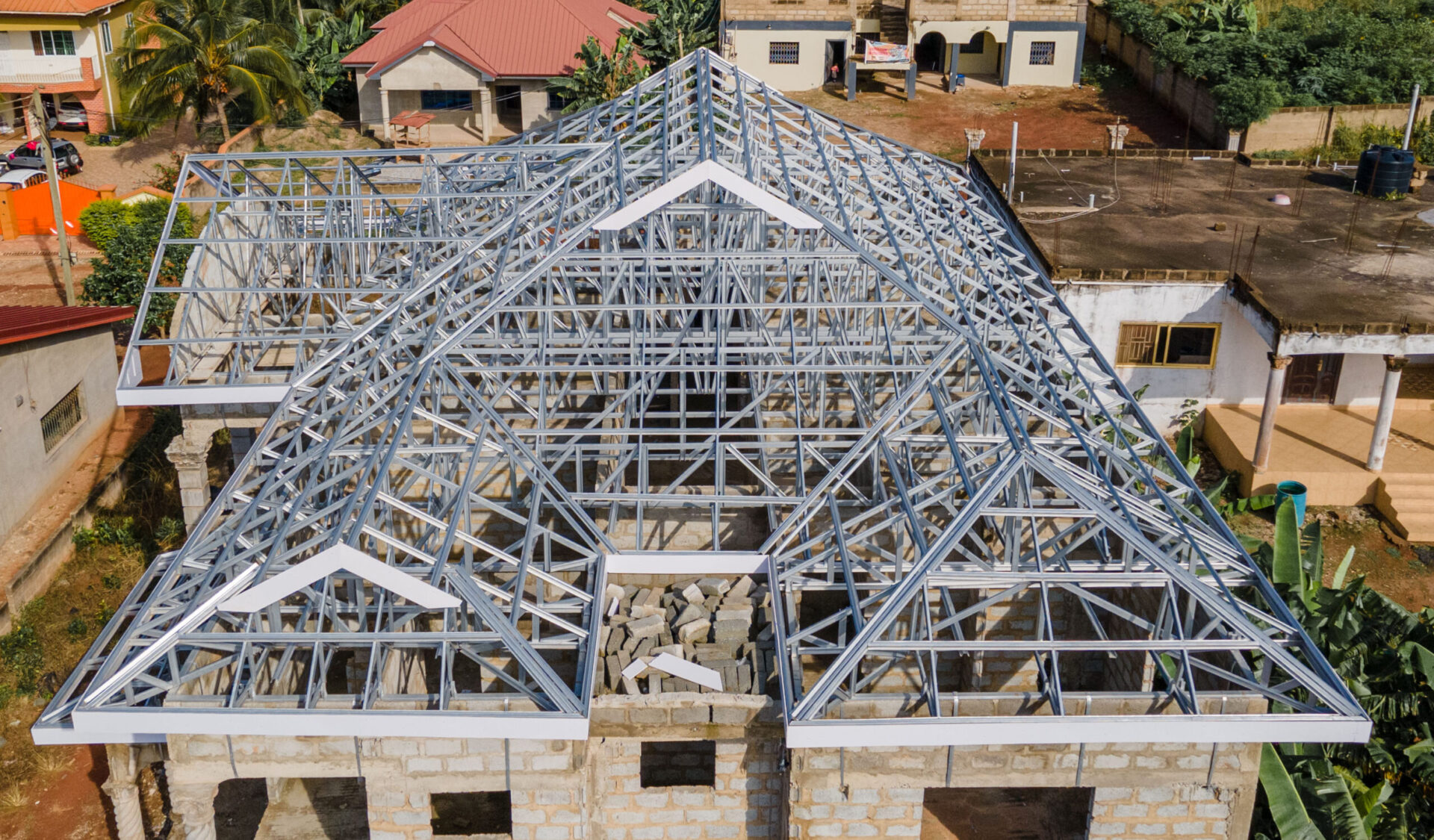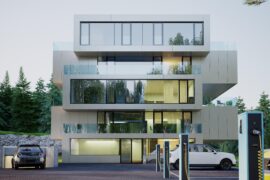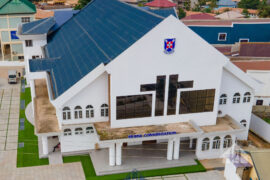As you stand beneath the shelter of a roof, have you ever wondered about the intricate framework that supports it? Roof trusses play a vital role in ensuring the stability and strength of a building’s roof. Understanding the different types, differences, components, and best practices for building roof trusses is essential for any construction project. From exploring the various designs to delving into the key components, this discussion will shed light on the fascinating world of roof trusses. So, let’s embark on this journey together and uncover the secrets to building a robust and reliable roof system.
Different Types of Roof Trusses
There are various types of roof trusses that you should be familiar with. One important aspect of choosing the right roof truss is considering the different materials available. Roof trusses can be constructed using wood, steel, or engineered lumber. Wood trusses are commonly used due to their cost-effectiveness and versatility. They are lightweight, making them easier to handle during installation. Steel trusses, on the other hand, offer excellent durability and strength, making them suitable for large or complex structures. Engineered lumber trusses are made from composite materials and provide a balance between cost and performance.
When comparing the cost of these different materials, wood trusses often come out as the most economical option. They are readily available and can be customized to fit various design requirements. Steel trusses, while more expensive, offer long-term savings due to their durability and resistance to pests and decay. Engineered lumber trusses fall in the middle in terms of cost, but they provide the advantage of being engineered to meet specific load requirements.
Key Differences Between Roof Truss Designs
When it comes to roof truss designs, there are various design variations that you need to consider based on your specific structural requirements. These design variations can include differences in the shape, size, and arrangement of the truss components, as well as the type of connections used. Structural considerations such as the span, load capacity, and roof pitch also play a significant role in determining the most suitable truss design for your building project.
Design Variations
Design variations in roof truss structures encompass a range of key differences that affect their performance and suitability for specific building projects. One important aspect of design variations is the aesthetic appeal that different roof truss designs can offer. Some designs, like the traditional king post truss, have a classic and timeless look, making them a popular choice for traditional and historical buildings. On the other hand, designs like the scissor truss or the gambrel truss can provide a more modern and unique appearance to a building. These design variations not only affect the visual appeal of the roof but also impact the overall functionality and efficiency of the structure. It is essential to consider the specific needs and requirements of a project when selecting a roof truss design to ensure optimal performance and satisfaction.
Structural Considerations
Structural considerations play a crucial role in differentiating roof truss designs, impacting their strength, load-bearing capacity, and overall stability. When designing roof trusses, it is essential to take into account various factors to ensure structural stability and optimal load-bearing capacity.
Here are three key structural considerations to keep in mind:
Truss configuration: The arrangement and shape of truss members determine the overall strength and stability of the roof structure.
Material selection: Choosing the right materials, such as timber or steel, is vital to ensure the truss can handle the anticipated loads and provide adequate support.
Connection methods: The way truss components are connected significantly influences the load transfer and overall structural integrity. Proper connection methods should be employed to maximize the load-carrying capacity of the roof truss system.
Essential Components of Roof Trusses
When it comes to roof trusses, understanding the basic design principles and load distribution is crucial. Truss design basics include the arrangement of chords, webs, and connectors to ensure structural stability and support. Load distribution involves the efficient transfer of weight from the roof to the walls and foundation, preventing excessive stress on any one component. By focusing on these essential components, you can ensure the durability and safety of your roof truss system.
Truss Design Basics
To understand the essential components of roof trusses, it is important to grasp the fundamental principles behind their construction. Truss design considerations play a crucial role in creating a structurally sound and efficient roof system. Here are three key factors to keep in mind:
Load distribution: Truss design must take into account the expected loads, such as the weight of the roof materials and any additional snow or wind loads. Proper load distribution ensures the truss can safely support the weight without compromising its integrity.
Span length: The length of the truss span affects the design and component selection. Longer spans may require additional support, such as intermediate supports or larger, more robust truss members.
Truss design software: Utilizing specialized software can streamline the design process, allowing for accurate calculations and efficient designs. These programs help optimize the truss layout, member sizes, and connections to ensure a cost-effective and safe roof structure.
Load Distribution
Considering the essential components of roof trusses, an important aspect to address is the distribution of loads. To ensure the structural integrity and safety of a roof truss system, it is crucial to accurately calculate the load-bearing capacity. Roof truss calculations involve determining the maximum weight that the trusses can support without compromising their stability. Factors such as the type of materials used, the span of the truss, and the design configuration all influence the load distribution. The load is typically distributed evenly across the truss members, with each member carrying a portion of the total weight. By carefully analyzing the load distribution, builders can ensure that the roof truss system can effectively support the loads it will be subjected to, providing a secure and reliable structure.
Understanding Load Distribution in Roof Trusses
Understanding the distribution of loads in roof trusses is crucial for ensuring the structural integrity and stability of a building. Properly calculating loads and distributing them evenly across the trusses is essential to prevent overloading and potential collapse. Here are three key points to consider when it comes to load distribution in roof trusses:
Load Paths: Load distribution in roof trusses follows a specific path. Forces from the roof, such as snow, wind, and dead load, are transferred from the roof covering to the trusses, down to the walls, and eventually to the foundation. Understanding these load paths is vital for designing a structurally stable roof system.
Load Magnitude: Calculating the magnitude of loads is crucial to ensure that the trusses can handle the weight. Factors such as local building codes, climate conditions, and intended use of the building must be taken into account. This information helps determine the appropriate size and spacing of the trusses to distribute the loads effectively.
Load Concentration: Identifying areas of load concentration is important for load distribution. Areas where heavy equipment or mechanical systems are located may require additional support or reinforcement. Properly distributing loads across the trusses helps prevent localized stress and potential failure.
Best Practices for Roof Truss Installation
When installing roof trusses, it is essential to follow best practices for optimal structural integrity and safety. Proper installation techniques ensure that the trusses are securely positioned, providing support and stability to the roof structure. One of the first steps in the installation process is to carefully plan and mark the layout of the trusses on the top plates of the walls. This helps ensure accurate placement and alignment. Next, it is crucial to use the correct fasteners, such as nails or screws, that are appropriate for the truss material and the load requirements. These fasteners should be installed at the designated connection points, ensuring a secure and tight fit. Additionally, bracing the trusses during installation is vital for maintaining their stability. Temporary braces can be used to hold the trusses in position until they are properly secured. It is also important to follow manufacturer guidelines and specifications, as they provide valuable information regarding installation techniques and recommended practices. By adhering to these best practices, you can ensure that your roof trusses are installed correctly and provide long-lasting structural support.
Factors to Consider When Choosing Roof Trusses
To ensure the proper selection of roof trusses, it is important to carefully evaluate various factors. When choosing roof trusses, there are several important factors that need to be considered. Here are three key factors to keep in mind:
Structural Requirements: The first and most important factor to consider when choosing roof trusses is the structural requirements of your building. You need to determine the load that the trusses will need to bear, such as the weight of the roof, snow, wind, and any additional loads like solar panels or HVAC equipment. The trusses should be able to withstand these loads without compromising the integrity of the structure.
Design Considerations: The design of the roof trusses should also be taken into account. Factors such as the roof pitch, the shape of the roof, and the desired ceiling height can influence the type of trusses that will be suitable. Additionally, the design should align with the overall aesthetic of the building.
Cost Considerations: Cost is another important factor to consider when choosing roof trusses. Different types of trusses have varying costs, and it is essential to evaluate the budget constraints. It is also important to consider the long-term costs, such as maintenance and repairs, to ensure that the trusses provide value for money in the long run.
Maintenance Tips for Long-lasting Roof Trusses
Maintaining roof trusses in good condition is crucial for their long-term durability and performance. To ensure the longevity of your roof trusses, it is important to follow proper maintenance techniques. Regular inspections are essential in identifying any potential issues before they become major problems. Inspect the trusses for signs of damage, such as cracked or split wood, loose connections, or rusted metal components. Address any issues promptly to prevent further damage.
In addition to inspections, regular cleaning is also important for maintaining roof trusses. Remove any debris, such as leaves or branches, that may accumulate on the trusses. This debris can trap moisture and lead to rot or decay. Use a broom or a soft brush to gently sweep away the debris, being careful not to damage the trusses.
Another key factor in maintaining roof trusses is proper ventilation. Adequate ventilation helps to prevent moisture buildup, which can weaken the trusses and lead to rot or mold growth. Ensure that your roof has proper vents and that they are clear of any obstructions.
Lastly, it is important to avoid overloading the roof trusses. Excessive weight on the trusses can cause them to sag or even collapse. Be mindful of the weight of any equipment or materials placed on the roof, and distribute the weight evenly to prevent strain on the trusses.
Frequently Asked Questions
How Much Weight Can a Roof Truss Support?
When it comes to roof trusses, one important factor to consider is their load capacity. The weight that a roof truss can support depends on various factors, such as the type and design of the truss, the materials used, and the spacing between trusses. It’s crucial to ensure that the load capacity of the trusses is sufficient for the weight they will need to support, including the weight of the roof covering, snow, and other potential loads.
Can Roof Trusses Be Customized to Fit Different Architectural Designs?
Roof trusses can indeed be customized to fit different architectural designs. The customization options and architectural adaptability of roof trusses allow for flexibility in creating unique and aesthetically pleasing structures. By working closely with architects and engineers, truss manufacturers can design and fabricate trusses that meet the specific requirements of any building design. This ensures that the trusses not only provide structural stability but also seamlessly integrate with the overall architectural vision of the project.
Are There Any Environmental Benefits to Using Roof Trusses?
Using roof trusses in your construction project can offer several environmental benefits. Trusses are designed to be energy efficient, which means they can help reduce your overall energy consumption. Additionally, trusses are often made from sustainable materials, such as timber, which makes them a more environmentally friendly choice compared to other roofing systems. By incorporating roof trusses into your building design, you can contribute to a more sustainable and eco-friendly construction.
What Are the Common Signs of Roof Truss Failure or Damage?
If you want to ensure the safety of your roof trusses, it is crucial to regularly inspect and maintain them. By conducting routine roof truss inspections, you can identify any signs of failure or damage early on. Look out for indicators such as sagging or unevenness in the roof, cracking or splitting truss members, or excessive moisture or mold growth. Promptly addressing these issues through proper roof truss maintenance can prevent further damage and ensure the longevity of your roof structure.
Can Roof Trusses Be Used for Both Residential and Commercial Buildings?
Yes, roof trusses can be used for both residential and commercial buildings. They offer several advantages such as cost-effectiveness, quick installation, and flexibility in design. However, there are also some disadvantages to consider. Residential buildings may require more customization due to varied architectural styles, while commercial buildings may have larger spans and load requirements. It is important to consult with a structural engineer to ensure that the roof trusses are designed and installed properly for each specific application.
Conclusion
In conclusion, understanding the different types and key differences of roof trusses, as well as the essential components and load distribution, is crucial for successful installation. By following best practices and considering factors such as design and material, you can ensure a long-lasting and durable roof truss system. Regular maintenance, including inspections and repairs, will further contribute to the longevity and safety of your roof trusses.
Discover more from Ghana Scoop
Subscribe to get the latest posts sent to your email.





